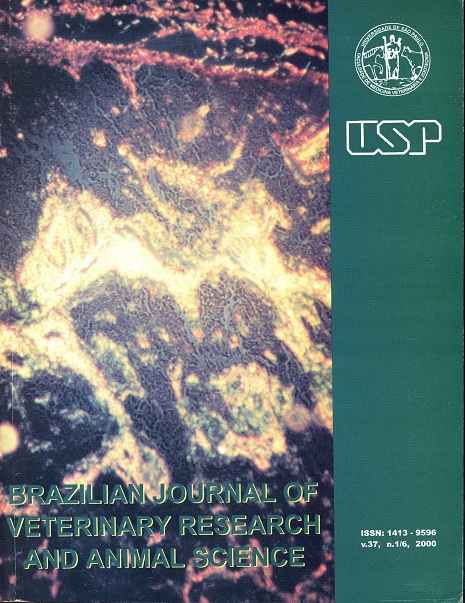Sexing of in vitro fertilized bovine embryos by multiplex PCR
DOI:
https://doi.org/10.1590/S1413-95962000000600006Keywords:
Sexing, Embryo, Bovine, PCRAbstract
In the present study the polymerase chain reaction (PCR) was used for sexing ninety-two in vitro fertilized bovine embryos. The embryos were obtained after in vitro fertilization of oocytes from slaughterhouses. The oocytes were matured, fertilized, and cultured until the blastocyst stage. The embryos were washed in PBS solution, and transferred to polypropylene tubes with containing ultrapure water and immediately frozen at -196ºC. The embryos were thawed on ice and treated with proteinase K. For the PCR reaction, aliquots of 34 µl from each tube were mixed to the primers BC1.2 and microsatellite sequence 1715, dNTPs, MgCl2, 10X PCR buffer, Taq DNA polymerase and water in a final volume of 50 µl. The samples were amplified and the PCR products separated by electrophoresis in a 8% polyacrylamide gel. The gels were stained in ethidium bromide solution and vizualized under UV-light. The amplification rate was 93.47%, with 41 (47.67%) male embryos and 45 (52.32%) female embryos. The use of 8% polyacrylamide gel was efficient for separating DNA fragments of very similar size.Downloads
Download data is not yet available.
Downloads
Published
2000-12-01
Issue
Section
VETERINARY MEDICINE
License
The journal content is authorized under the Creative Commons BY-NC-SA license (summary of the license: https://
How to Cite
1.
Luz MR, Watanabe YF, Ferro JA, Ferro MIT, Mauro SMS de, Hossepian de Lima VFM, et al. Sexing of in vitro fertilized bovine embryos by multiplex PCR. Braz. J. Vet. Res. Anim. Sci. [Internet]. 2000 Dec. 1 [cited 2026 Jan. 17];37(6):453-6. Available from: https://revistas.usp.br/bjvras/article/view/5861





